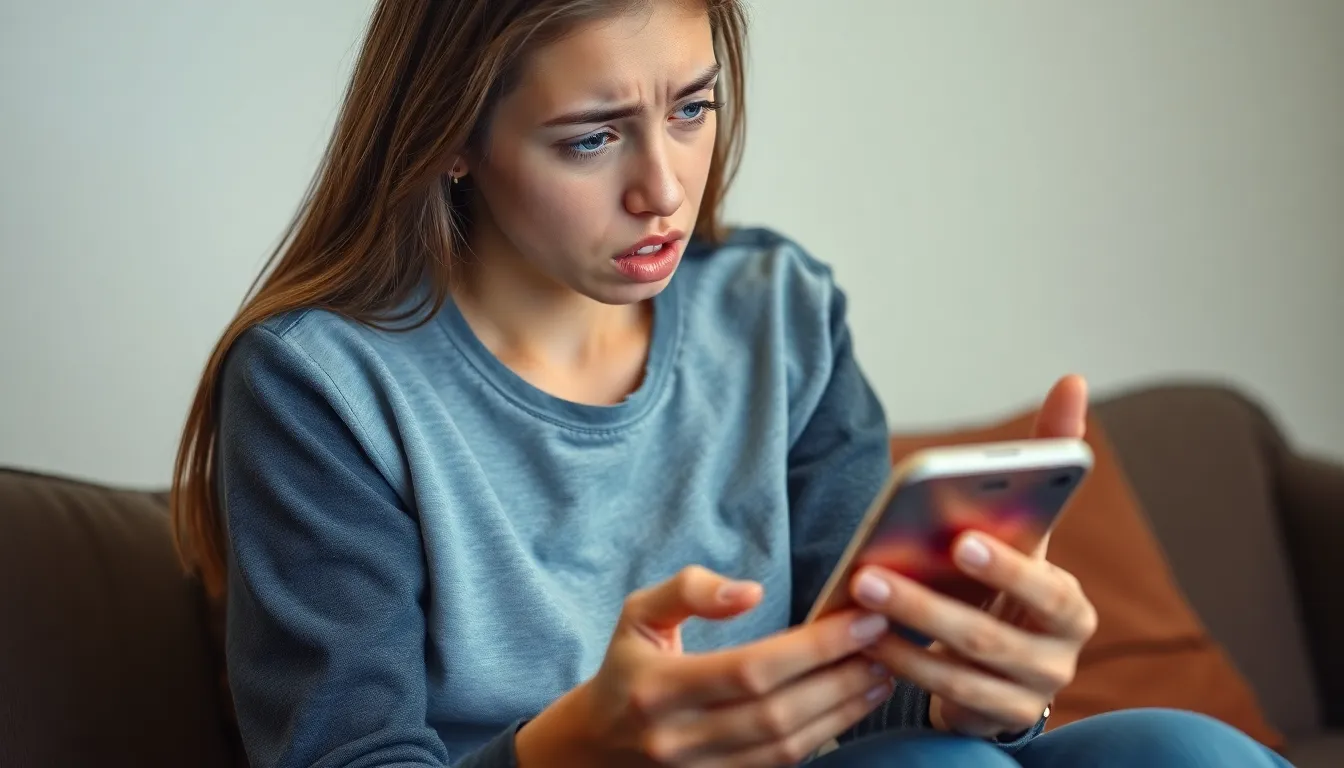In a world where iPhones and Androids often clash like cats and dogs, it can be tricky to figure out if you’ve been blocked. Imagine sending a message to your friend only to be met with radio silence. Is it a case of a busy schedule or has the Android overlord hit the block button?
Table of Contents
ToggleUnderstanding Blocking on Android and iPhone
Identifying whether someone blocked you on Android or iPhone can prove challenging. Both platforms offer distinct features, but the signs of blocking often remain similar across devices. Messages sent to a blocked contact show no notification of delivery. Users might notice a lack of “delivered” or “read” receipts as further confirmation.
Phone calls also provide clues. If calls consistently go straight to voicemail without ringing, it’s a potential sign of being blocked. Some Android users might see a single ring before being redirected to voicemail, while iPhone users may not experience any ringing at all.
Text message interactions yield additional insights. Blocked users might encounter unresponsive message threads. Messages may appear to send, but they won’t generate delivery confirmations. Engaging in group chats can reveal the blocking status as well. If blocked, messages will still show for other participants, but communication with the individual remains one-sided.
Contact lists can also indicate blocking. Users on both platforms may discover that the blocked number disappears from their contacts. Checking the last seen or online status may provide additional hints, especially within messaging apps like WhatsApp or Messenger.
Recognizing these signs requires careful observation. Individuals must consider various interactions, as no single indicator confirms blocking definitively. Approach the situation thoughtfully before drawing conclusions.
Signs That Indicate Blocking

Several signs can indicate whether an Android user has blocked an iPhone user. Observing these details may clarify the situation.
Unresponsive Calls
Calls may go directly to voicemail without ringing when an Android user blocks an iPhone user. It’s common for the phone to display a notification that the call was not connected. Multiple attempts to reach the individual may yield the same result. Inconsistent behavior like this suggests a potential block. Additionally, if the contact usually answers calls but suddenly fails to respond, it heightens concerns about being blocked.
Messages Not Delivered
Messages sent from an iPhone to an Android device may not show delivery confirmation if blocked. Text threads could appear as if they were sent but remain in a “Sent” status without confirming delivery. An absence of read receipts can also suggest that the recipient isn’t receiving messages at all. Group chats may still display messages from other users, highlighting that only the blocked contact experiences these issues. Sudden shifts in communication patterns signal the possibility of a block.
How to Confirm If You’ve Been Blocked
Determining if an Android user has blocked an iPhone can be tricky. Several methods help to confirm this status clearly.
Using Third-Party Apps
Utilizing third-party apps offers an alternative approach for checking block status. Apps like Truecaller or WhatsApp can provide insights on whether a number has been blocked. Users can see caller details or message statuses that indicate if attempts to communicate have failed. Many of these applications highlight blocked numbers or provide alerts when a message isn’t delivered. Keep in mind that privacy settings may limit the effectiveness of such tools, requiring users to pay attention to permissions and configurations.
Checking Call Logs
Reviewing call logs presents another valuable method to confirm blocking. If calls to a particular contact consistently divert to voicemail without ringing, this signals a potential block. Regularly checking call history can reveal patterns, particularly if other contacts are reachable without issue. If calls to that specific Android number show no activity or never register as missed, the chances of being blocked increase. Tracking these details helps build a clearer picture of communication status and can guide users in confirming their suspicions.
What To Do If You’re Blocked
Identifying the right actions after suspecting you’ve been blocked is crucial. Communication with the person holds value but must be approached thoughtfully.
Ways to Communicate
Try reaching out via different communication channels. Sending an email may provide an alternative method to check in. Utilizing social media platforms can also let you send a message without relying on text or calls. Due to the nature of social interactions, a casual approach works best; lighthearted messages can ease tension. If interactions are possible in group chats, engaging there may also yield responses that clarify the situation. Keeping communication respectful enhances the chance of receiving feedback.
Respecting Privacy
Respecting the other person’s privacy is vital. Understanding that factors beyond your control can affect their responses is important. Blocking may stem from personal reasons that don’t involve you. Acknowledging their space ensures you don’t come off as intrusive. If no response arises, consider moving forward without pressing the issue further. Prioritize mutual respect and emotional well-being, as both parties deserve boundaries. Establishing clear limits encourages healthy communication in the future.
Determining if an Android user has blocked an iPhone can be challenging but not impossible. By paying attention to communication patterns and specific signs like unresponsive messages and calls going straight to voicemail, users can gather clues. Utilizing third-party apps and reviewing call logs can also provide additional insights into the situation.
If suspicions arise it’s essential to approach the matter with respect and sensitivity. Thoughtful communication through alternative channels can help clarify misunderstandings. Ultimately prioritizing mutual respect and emotional well-being fosters healthier interactions and encourages open dialogue in the future.


